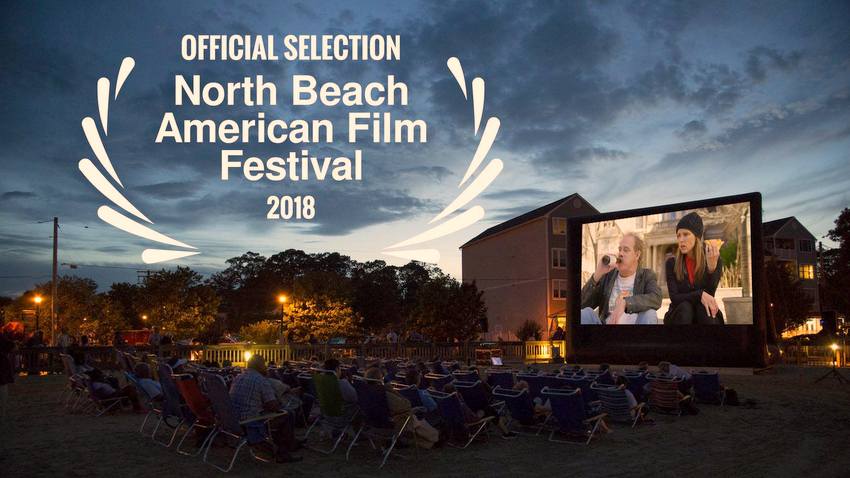
Date: 28 January 2019
Case Study: The Making of Nothing To Do.
Filmmaker: Michael Kravinsky
Our film is called Nothing To Do. It’s based on the personal experience of caring for my father, Joe, at the end of his life in hospice. Caring for him, being there and supporting him at the end, was one of the most profound moments of my life. Although the story of the brother and sister are fiction, that aspect of the story is based on what many families go through during that stressful time. There are both comic and dramatic moments between all the members of the family as they deal with supporting their father in their own way.
Q: Tell us about the festival run, marketing and sales?
Michael Kravinsky: We spent a year on the festival circuit and attended 12 festivals. It was amazing. The audience members often took us aside after screenings and wanted to discuss their own personal experience of caring for a parent. One attendee told me she wasn’t sure if she should watch the film, because her father had just recently passed away. But she was really touched by Nothing To Do and thought the film handled the subject with respect and humor. I remember walking up to Paul Fahrenkopf, who plays the character of Kenny during the Beaufort International Film Festival in South Carolina. The person he was talking to had been crying. They had been talking about the film and the person wanted to talk about his mother, who he had cared for.
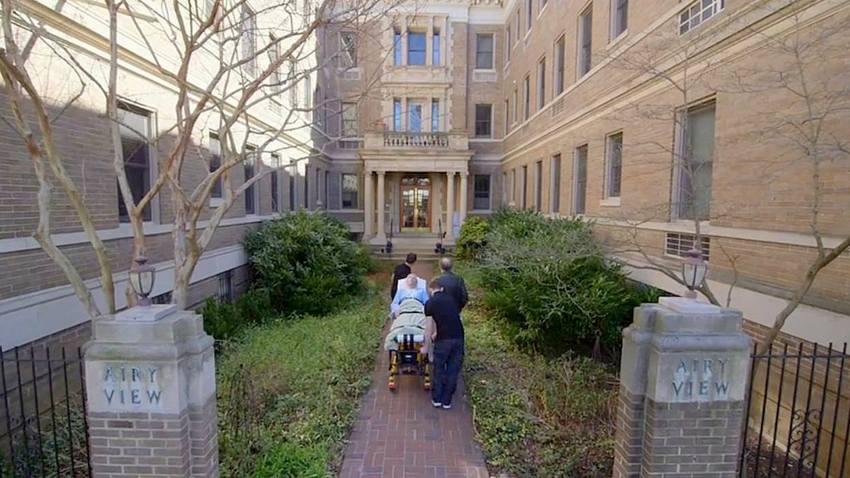
Q: Dramatic Feature
- Director: Mike Kravinsky
- Producers: Sali Dimond
- Budget: $80,000
- Financing: Self
- Shooting Format: 2K
- Screening Format: BluRay / DCP
- World Premiere: Alexandria Film Festival, Alexandria Virginia
- Awards: Finalist, Cinequest Screenplay Competition, Honorable Mention, TrackingB screenplay competition (L.A.), // Jury Award, Alexandria Film Festival, // Best director / Best original score, Atlantic City Film Festival, // Best film, North Beach Film Festival (MD) // Nominated, Best actor (Paul Fahrenkopf) Beaufort International Film Festival (SC) We also screened in Orlando, San Francisco and Durango CO,
- Website: (FB) Facebook
Q: Give the full Official Synopsis for your film?
Michael Kravinsky: Logline – What happens when you can’t stand the way your sibling does just about anything, but you’re forced to be with them during your father’s last days on Earth?
Long Synopsis – Nothing To Do is the story of 50 something Kenny, an aimless DJ at an oldies station in Philadelphia. He’s called to a hospital in Washington D.C., where he’s informed that his father Irv, due to many complications, is at the end of his life. Something Irv has kept from his children. It’s suggested that Kenny and his father discuss hospice. Kenny’s younger sister, a more accomplished person, tries to intervene. She wants to send her father back to the hospital to “get better.” Nothing To Do – A story of the family bonds that never die.
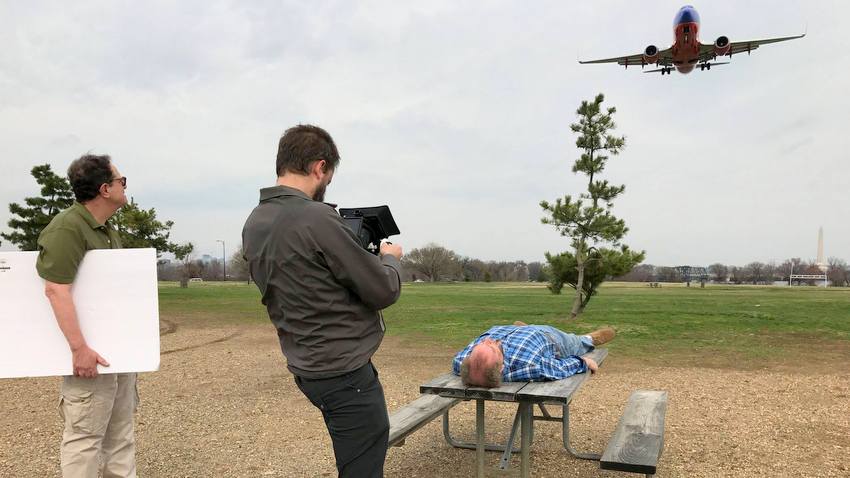
Q: Development & Financing?
Michael Kravinsky: After I had completed and got distribution for a previous film, I decided to try again. I knew I wanted to write the screenplay, I just didn’t know the subject. After a couple of months of false starts and frustrations on different story ideas, my wife, Liza, who’s also the films composer, suggested I try writing about my experience with my father. As I had mentioned earlier, it was truly one of the most profound, stressful and special moments for me. Her suggestion was like a light switched on. I finished the first draft in about a month. A year and 24 drafts later, I had the finished screenplay. Nothing To Do was a finalist at The Cinequest Screenplay Competition in San Jose CA and an honorable mention at TrackingB in Los Angeles. Nothing To Do is an ultra low budget film. I used my savings to make it.
Q. Production ?
Michael Kravinsky: After the screenplay was completed, I took a pause of a couple of months. Nothing To Do was a finalist at the Cinequest Screenplay Competition in San Jose, CA and an honorable mention at the TrackingB Screenplay Competition in Los Angeles. Because of that, there were some discussions / phone calls about optioning the screenplay, but I really wanted to direct it myself. So those optioning conversations didn’t go too far. I decided to make Nothing To Do with my personal savings as an ultra low budget film. In Sept. 2016, I hired our producer, Sali Dimond and we started the casting process. Half of the actors I had worked with before. I used a local casting website here in Washington, DC, The Actors Center and used Backstage for the rest.
Locations were generally easy to obtain except hospital settings. There are no hospital sets in DC. All are working hospitals, so no hospitals let us shoot there for insurance reasons. We were able to find a rehabilitation center that agreed. The exterior of “Irv’s” apartment was actually the exterior that was used as Tom Cruise’s apartment from A Few Good Men. When I approached the condo association, I told them that I’ve liked that building since I saw it in that film. I told them if they agreed to let me shoot there that our production would have a “much smaller footprint!” Like all ultra low budget films, I used what I had free access to instead of trying to get what I didn’t. We shot Irv’s bedroom scenes in my home. My dog, Charlie also made an appearance. She worked for little cubes of cheese.
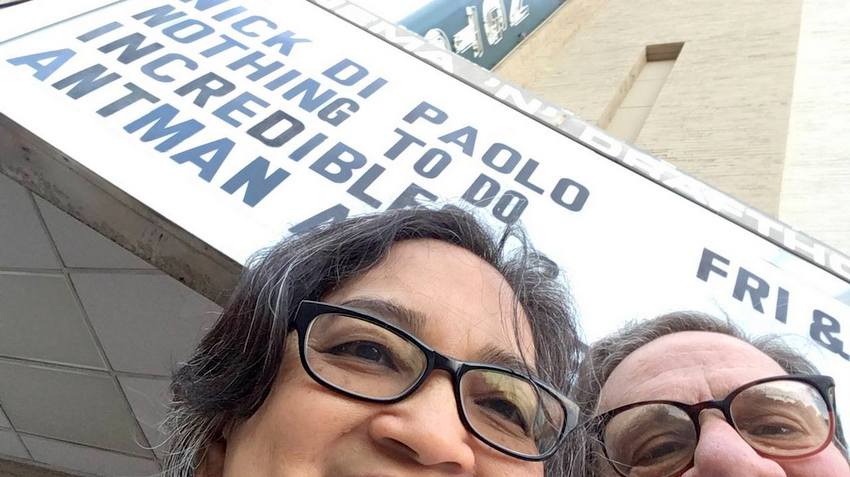
After the actors were on board, we began a three month process of rehearsals. Since Nothing To Do was an ultra low budget film, everyone had a full-time job. We were only able to rehearse on weekends. The main cast, who are mostly in their 50’s were into the film’s subject as they all had experiences with aging family members. As a result, the cast had many great ideas to add to their characters.
Although our amazing DP, Travis Edwards worked in 4K, he suggested we shoot the film in 2K because it helped with production and post production costs. Plus, I reasoned, that after the festival run, the film will be online. This is probably the last time I shoot in that format though. It’s now become much cheaper to shoot in the bigger formats.
We had a 21 day shoot schedule beginning in February 2017. As a result of all the rehearsal time, the actual shoot went very smoothly. I highly recommend “too much” rehearsal. Especially for small films. There were no more than 5 takes per scene. Usually 3. There’s always “day of” problems. But if the cast knows their character and the crew knows placement and movement of the camera, lighting and sound, when a problem does arise, it can be solved without stressing the entire production. To summarize, PREP, PREP, PREP! Absolutely essential for a low budget film. Because everyone was so prepared, the days were generally 10-12 hours max including lunch.
We had a very small crew. It would have been nice to have a couple of extra people on set to spread the work around, but the size of our production gave us a lot of flexibility when problems arose. The best example is that it snowed on one of our exterior shoot days. We easily adjusted the schedule and were able to move indoors.
After the shoot, I spent 4 months editing. After what I thought was the final film, I had a test screening with members of both a senior group here in Arlington, Virginia and with local members of the national organization, Women in Film and Video. Many of their suggestions ended up being incorporated into Nothing To Do. We didn’t have to reshoot anything, but it did add another 3 weeks to editing. Where I splurged was on color grading and sound design. I hired a local finishing shop, Post-Op Media in Arlington, VA. They were very supportive of the project and really went out of their way to make Nothing To Do look and sound great. I had a completed film by mid-September 2017.
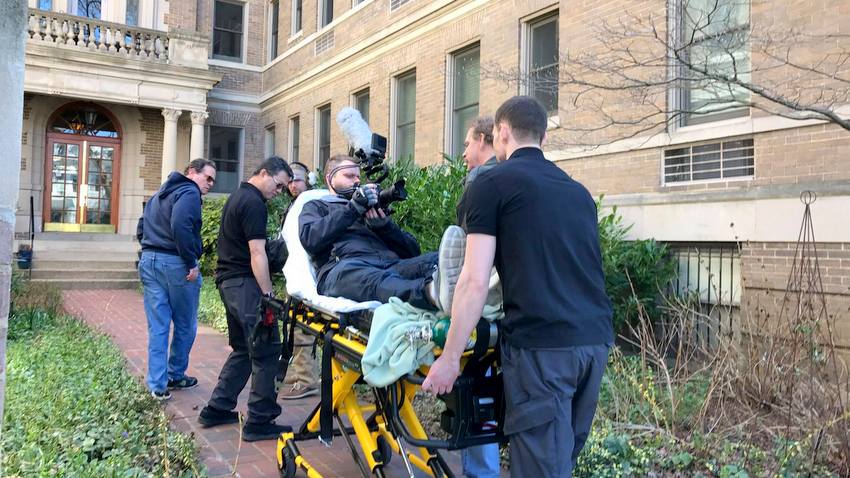
Q: Festival Preparation & Strategy?
Michael Kravinsky: I submitted Nothing To Do to 40 festivals. We got into 12. My strategy for submitting to festivals was researching the average age of the city I was submitting to and how the festival itself tried to portray themselves. Nothing To Do has a cast in their 50’s and is a story of caring for an elderly parent. I thought it would be a waste of money to submit to festivals that tried to appeal to a younger audience. I reasoned this type of story wouldn’t be on the radar of a younger crowd. I also stayed away from huge festivals. I assumed they got plenty of submissions. Why waste my money just to get a nice rejection email. I submitted Nothing To Do to medium regional festivals. For the most part it worked, plus we had really engaged appreciative audiences.
When I got accepted into a festival, I checked out their local media and started sending out regular emails that included the trailer / logline / the fact that I and maybe cast members will be there. Sometimes it worked. When we screened in San Francisco for example, I got an interview with KCBS. When we screened in Orlando, the Orlando Sentinel printed an Op-Ed I wrote.
I would say the best festival we attended was the Beaufort International Film Festival in South Carolina. The whole cast went and they treated us wonderfully. A large, engaged and appreciative audience.
Q: The Release?
Michael Kravinsky: I had a previous film, Geographically Desirable, that got distribution. It was okay, but I find that unless you’re dealing with a major distributor, most everything can be done on your own without taking up too much of your time. I placed Nothing To Do on Amazon / Amazon Prime. Using their algorithms, the viewership has steadily increased weekly. I also just signed up with an aggregator. I expect to be fully worldwide on iTunes by mid-February 2019. When it comes to getting the word out about the film, I use October Coast PR in Los Angeles. They work with smaller films and filmmakers and do a great job of getting the word out.
Q: Advice from the Filmmaker?
Michael Kravinsky: I think the advice I would have for other filmmakers is what you may already know. Preparation! Rehearse the cast. Rehearse the crew. There should be no surprises on the set if you can help it. When you write, use what you have, not what you’d like to have. Listen to cast/crew suggestions. Don’t freak out if something doesn’t go right, like weather or sick calls. In the end, it will all be good.
Richard Green Documentary, ‘I Know Catherine, The Log Lady’: Premiere in NYC, LA May 9th
Lynchian Doc I Know Catherine, The Log Lady Makes Hollywood Premiere 4/17, Rollout to Follow
In Camera by Naqqash Khlalid Launch on VOD April 29
Naqqash Khlalid’s Directs Nabhan Rizwan. In Camera stars an EE BAFTA Rising Star Award Nominee.
2025 Philip K. Dick Sci-Fi Film Festival Award Winners Announced
Vanessa Ly’s Memories of the Future Awarded Best PKD Feature
Dreaming of You by Jack McCafferty Debuts VOD & DVD for April Release
Freestyle Acquires “Dreaming of You” for April 15th Release
Hello Stranger by Paul Raschid set for London Games Festival & BIFFF
The film Is set for an April 10th Premiere at The Genesis Cinema in London (LGF) and BIFFF
Daydreamers Official Trailer by Timothy Linh Bui: Released by Dark Star Pictures
Daydreamers Vietnamese Vampire Thriller – May 2nd release









